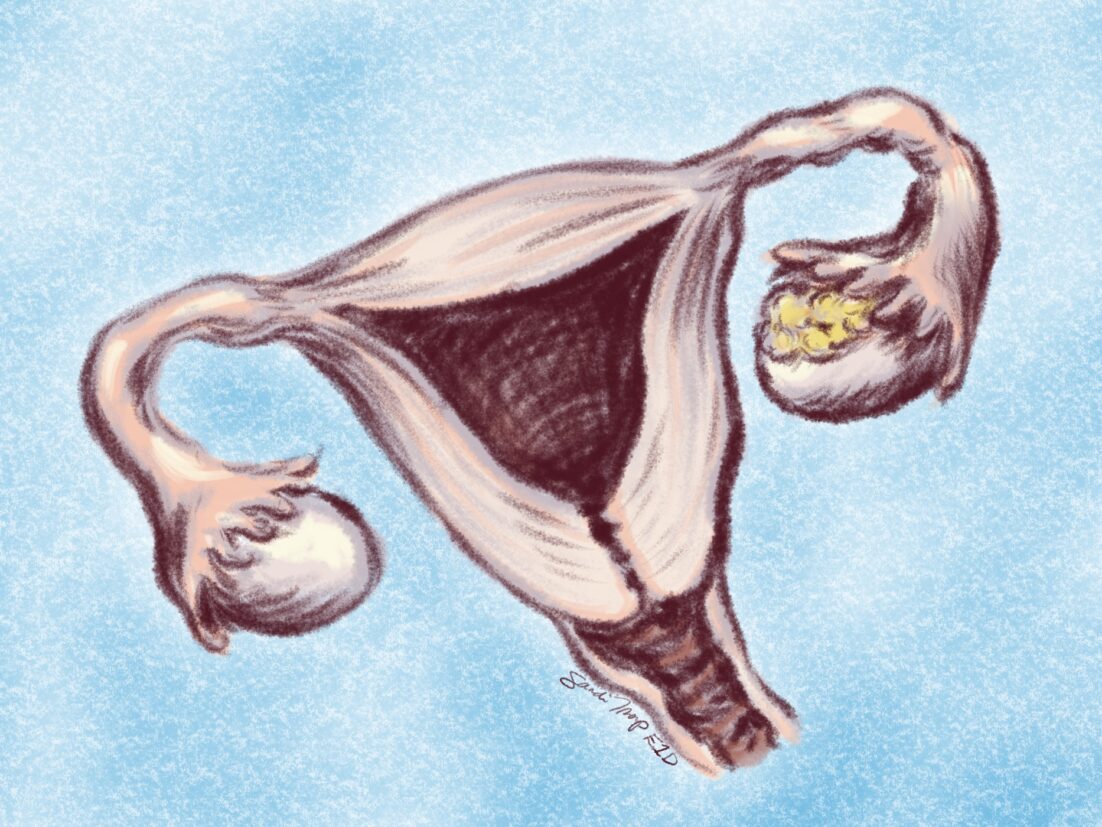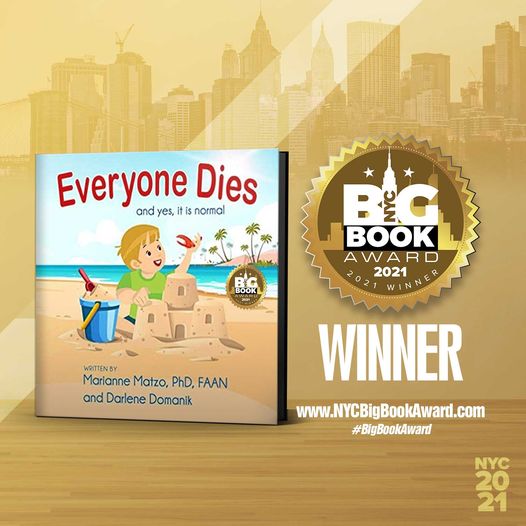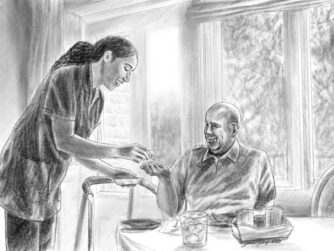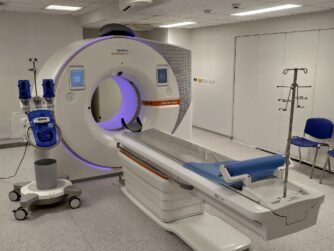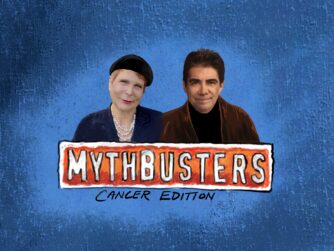Ovarian Cancer is one of the most common gynecologic cancers, but 49% of women are diagnosed after it has already spread to distant sites. This is because many of the warning signs can be dismissed as a bowel disease or part of aging. Learn how to get a diagnosis sooner by recognizing symptoms and advocating for yourself when something seems very off.
In this Episode:
- 01:35 – Historical Examples of Funeral Food Offerings and Feasts
- 04:06 – Recipe of the Week – South Dakota Frito Treats
- 05:28 – Ovarian Cancer: What it is, Symptoms, and How to Get Diagnosed
- 33:47 – Dick Johnson is Dead, a Documentary
- 41:38 – Outro
What is ovarian cancer?
Normal, healthy cells grow, divide and die in an orderly process. Cancer cells are different because they avoid the normal processes, grow out of control and divide into new abnormal cells. After time, they can lead to the growth of a tumor. Cancer cells can also spread (metastasize) into nearby tissue or travel into distant places in the body. (What is Cancer?)
Ovarian cancers were previously believed to begin only in the ovaries, but recent evidence suggests that many ovarian cancers may actually start in the cells in the fallopian tubes.
What are the symptoms of ovarian cancer?
- Persistent abdominal distension (bloating)
- Feeling full fast and/or loss of appetite
- Pelvic or abdominal pain
- Having to urinate frequently or urgently
- Changes in bowel habit (diarrhea or constipation)
- Extreme fatigue
- Unexplained weight loss.
- Unusual vaginal bleeding
- Weight gain from increased fluid in the abdomen
These symptoms need to be frequent, persistent (meaning goes on for a long time and hard to get rid of), and new (meaning it is not something that you have had for 20 years).
Keep a symptom diary using this tool – you can print off and mark off symptoms you are having that you can take to your health care practitioner. Another tool is the free app PTracker (Android and Apple) where it is easy to record gynecological symptoms and take daily notes on anything else.
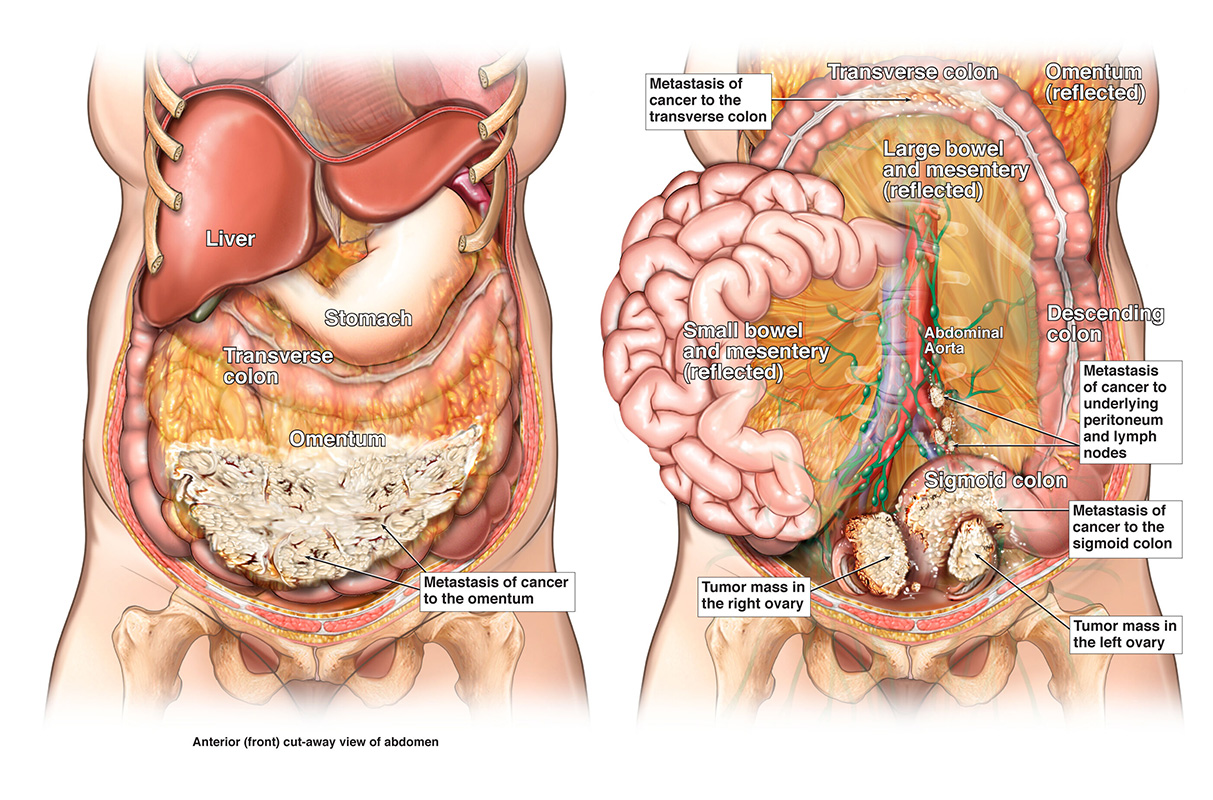
If ovaries are removed during a hysterectomy, does that mean I cannot get ovarian cancer?
No, this makes ovarian cancer less likely to occur, but it does not remove all risk. A total hysterectomy removes the ovaries, fallopian tubes, and uterus, so is less likely than a partial hysterectomy, which leaves the ovaries.
Does an annual pap smear check for ovarian cancer?
No, the pap smear looks for cervical cancer only. There is no screening test for ovarian cancer.
If I suspect I have ovarian cancer, what can I do?
We talk about the things to discuss with a doctor, what to expect if a workup is needed, and especially how to be persistent and advocate for yourself if you think you may have ovarian (or a related) cancer. Listen to the podcast for more details!
Related Content

- S1E23: Support Groups
- S1E08: Receiving Bad News
- S4E46: What You Need to Know about Stomach Cancer – Part 1 (where we talk about cancer staging)
- S1E31: Clinical Trials
- S1E17: Survivor’s Guilt with Tarah Warren (Ovarian cancer survivor)
- A free guide on sexual health for women (tips on intimacy, based on research with ovarian cancer patients)
- S2E32: How to Find Intimacy When a Partner Has Serious Illness
- S5E4: Inflammation: What it is, How It Causes Disease, and How You Can Decrease It
References:
- Funeral Customs: Chapter VI: Funeral Feasts and Processions (sacred-texts.com)
- Ovarian Cancer Red Flags: What to Know to Quicken Diagnoses (medscape.com)
- Ovarian cancer red flags: help prevent delayed diagnosis | British Journal of Nursing (magonlinelibrary.com)
- Ovarian cancer: Still possible after hysterectomy? – Mayo Clinic
Resources:
- Symptoms diary 2022.pdf (targetovariancancer.org.uk)
- American Cancer Society: Ovarian Cancer
- National Ovarian Cancer Coalition
- Macmillan Cancer Support: Ovarian Cancer
- National Comprehensive Cancer Network Treatment Guideline (Patient Booklet)
- Symptoms of ovarian cancer | Target Ovarian Cancer
- Ovarian Cancer Awareness Month Toolkit | OCRA (ocrahope.org)
Dick Johnson Is Dead
Dick Johnson Is Dead is a 2020 American documentary film directed by Kirsten Johnson and co-written by Johnson and Nels Bangerter. The story focuses on Johnson’s father Richard, who suffers from dementia, portraying different ways—some of them violent “accidents”—in which he could ultimately die. In each scenario, the elderly Johnson plays along with his daughter’s black humor and imaginative fantasies. The film premiered at the 2020 Sundance Film Festival, where it won the Special Jury Award for Innovation in Non-fiction Storytelling. It was released on Netflix on October 2, 2020.
Recipe of the Week
If you thought Fritos were only for savory dishes or a stand-alone bag of chips, we have a recipe for you! These squares are smothered in peanut butter, chocolate chips and sweet goodness, and fast and easy to whip up for your next event! Head over to Taste of Home for the full recipe.



https://blog.feedspot.com/palliative_care_podcasts/
Everyone Dies: and yes, it is normal!
Everyone Dies (and yes, it is normal) is a story about a young boy named Jax who finds something special on the beach where he and his grandpa Pops are enjoying a wonderful day. Pops helps Jax understand that death is a normal part of life. This book provides an age appropriate, non-scary, comfortable way to introduce the important topic of mortality to a preschool child. Its simple explanation will last a lifetime. Autographed copies for sale at: www.everyonediesthebook.com. Also available at Amazon
Mourning Jewelry

We offer a way to memorialize your loved one or treasured pet with a piece of handmade jewelry. When people comment on it and the wearer can say for example “I received this when my mother died” which opens the conversation about this loss. All our jewelry is made with semi-precious stones and beads, vintage beads, and pearls. You can choose between earrings or bracelets and the color family. Learn More


